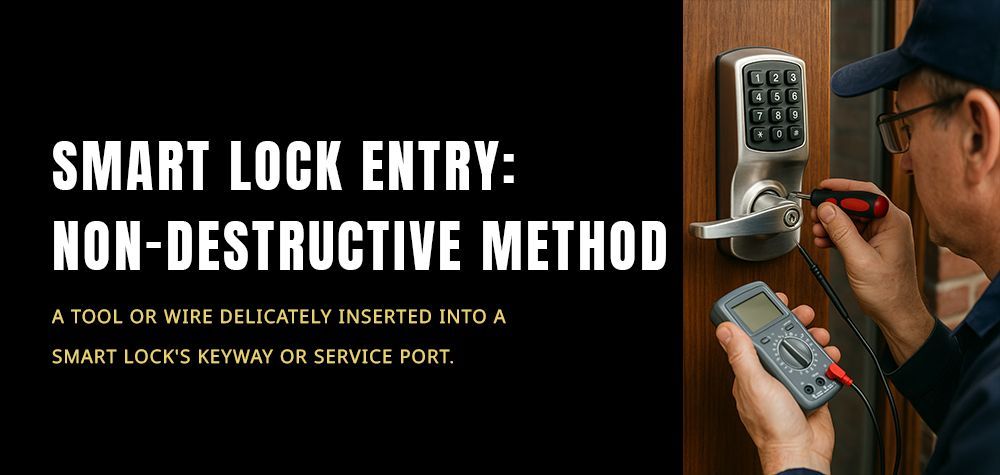The Impact of Weather on Car Door Locks
Hey there, car owner! Ever had to deal with a jammed or frozen car door lock in the middle of winter? Or maybe you've struggled with rust and corrosion during those rainy months? Weather can have a significant impact on your car door locks, but don't worry – with the right repair and protection strategies, you can keep those locks working smoothly all year round. Let’s dive into how different weather conditions affect car door locks and what you can do to protect them.
How Weather Affects Car Door Locks
Understanding how weather impacts car door locks is the first step in preventing issues. Here are the main weather-related problems:
Cold Weather
Cold weather can cause several problems for car door locks:
- Freezing Locks: Moisture inside the lock can freeze, making it impossible to insert or turn the key.
- Brittle Components: Extremely low temperatures can make the lock components brittle, increasing the risk of damage when you try to force the lock.
Hot Weather
Hot weather can also affect your car door locks, though the issues are less common than with cold weather:
- Expansion of Metal Parts: High temperatures can cause the metal parts of the lock to expand, leading to tightness and difficulty in turning the key.
- Drying Lubricants: Heat can cause lubricants to dry out, leading to friction and potential jamming.
Wet and Humid Weather
Rain and humidity can wreak havoc on car door locks:
- Rust and Corrosion: Moisture can lead to rust and corrosion, which can damage the internal components of the lock.
- Dirt and Debris: Rain can wash dirt and debris into the lock, causing it to jam.
Repairing Weather-Damaged Car Door Locks
If your car door locks have already been affected by weather, here are some repair strategies:
Dealing with Frozen Locks
- Lock De-Icer: Keep a lock de-icer handy to quickly thaw frozen locks. Spray it directly into the lock to dissolve the ice.
- Warming the Key: If you don’t have a de-icer, you can warm the key with a lighter and gently insert it into the lock to melt the ice.
Fixing Rust and Corrosion
- Rust Removal: Use a rust remover or a mixture of vinegar and baking soda to clean the rust from the lock. Apply the solution with a small brush and wipe it clean.
- Lubrication: After removing rust, lubricate the lock with a silicone-based lubricant to prevent further corrosion.
Addressing Stiff or Jammed Locks
- Cleaning the Lock: Use compressed air to blow out any dirt and debris from the lock. Follow up with a lock cleaner to dissolve any remaining grime.
- Re-Lubrication: Apply a graphite-based lubricant to the lock to restore smooth operation.
Protection Strategies for Car Door Locks
Preventative measures can help protect your car door locks from weather-related issues:
Regular Maintenance
- Routine Cleaning: Clean your car door locks regularly to remove dirt and debris. Use compressed air and a lock cleaner for best results.
- Frequent Lubrication: Lubricate the locks at least twice a year with a graphite-based or silicone-based lubricant to ensure smooth operation.
Weather-Specific Tips
- Winter Protection: Use a lock de-icer or petroleum jelly around the keyhole to prevent freezing. Park in a garage or use a car cover to shield your vehicle from the cold.
- Summer Care: Park in shaded areas to avoid excessive heat. Regularly check and reapply lubricant to prevent it from drying out.
- Rainy Season Measures: Apply a thin layer of silicone spray to the lock to repel moisture. Ensure your car's weather stripping is intact to prevent water ingress.
Long-Term Solutions
- Weatherproof Covers: Install weatherproof covers over your car door locks to protect them from the elements.
- Regular Inspections: Perform regular inspections of your car door locks to catch and address any issues early.
When to Seek Professional Help
Sometimes, despite your best efforts, professional help is necessary:
- Persistent Issues: If the lock continues to jam or freeze despite your maintenance efforts, it’s time to call a professional locksmith.
- Complex Repairs: For rust or corrosion that has caused significant damage, or for locks that need part replacements, professional repair is recommended.
- Key Extraction: If your key breaks off in the lock, do not attempt to remove it yourself. Call a locksmith to avoid further damage.
Conclusion
Weather can have a significant impact on car door locks, but with the right repair and protection strategies, you can keep them functioning smoothly year-round. Regular maintenance, weather-specific care, and knowing when to seek professional help are key to preventing and addressing weather-related lock issues. Stay prepared, and keep your car locks in top shape no matter the season!
DIY Car Door Handle and Lock Assembly Repair: A Practical Guide
Call Us Any Time!









